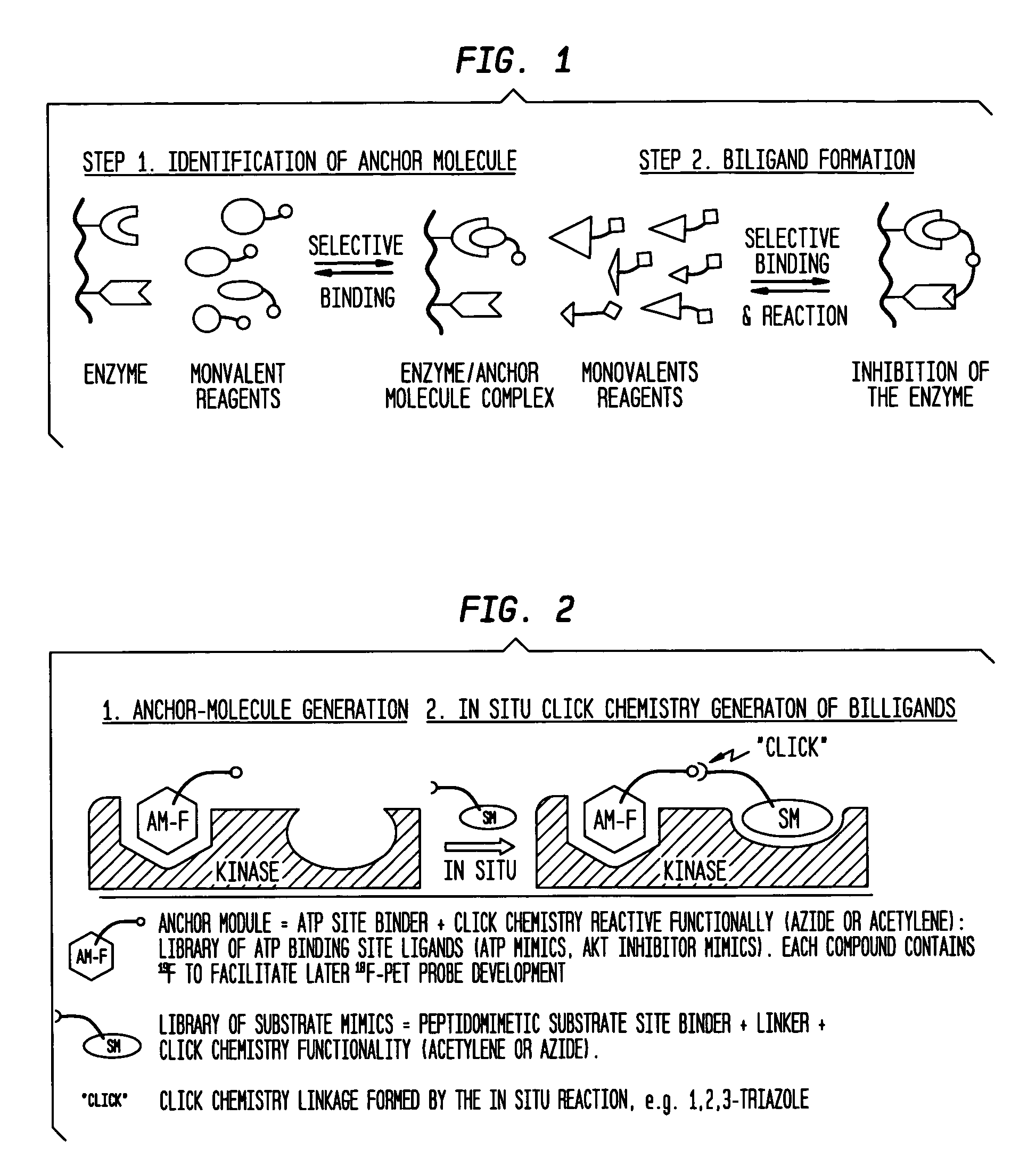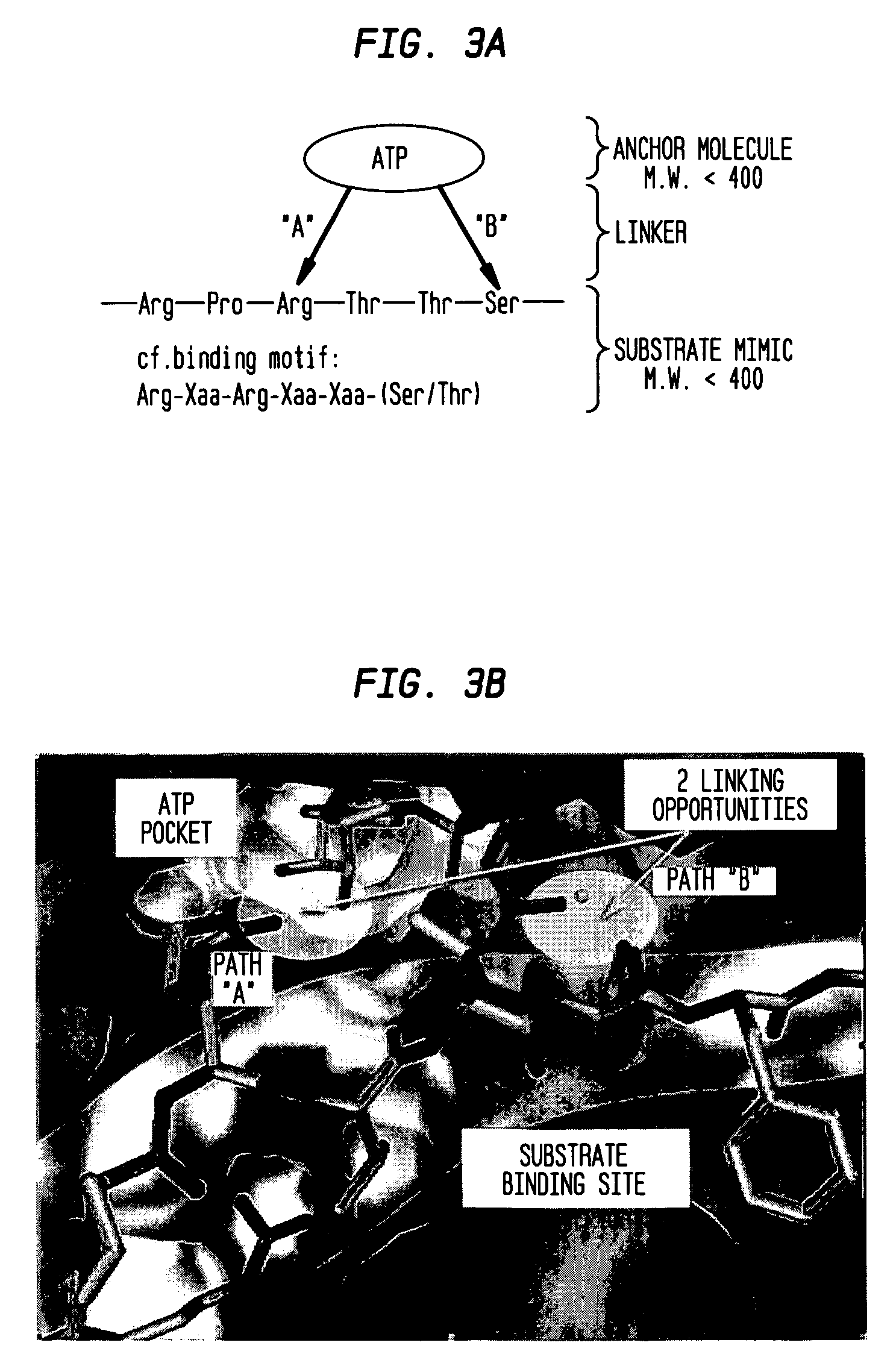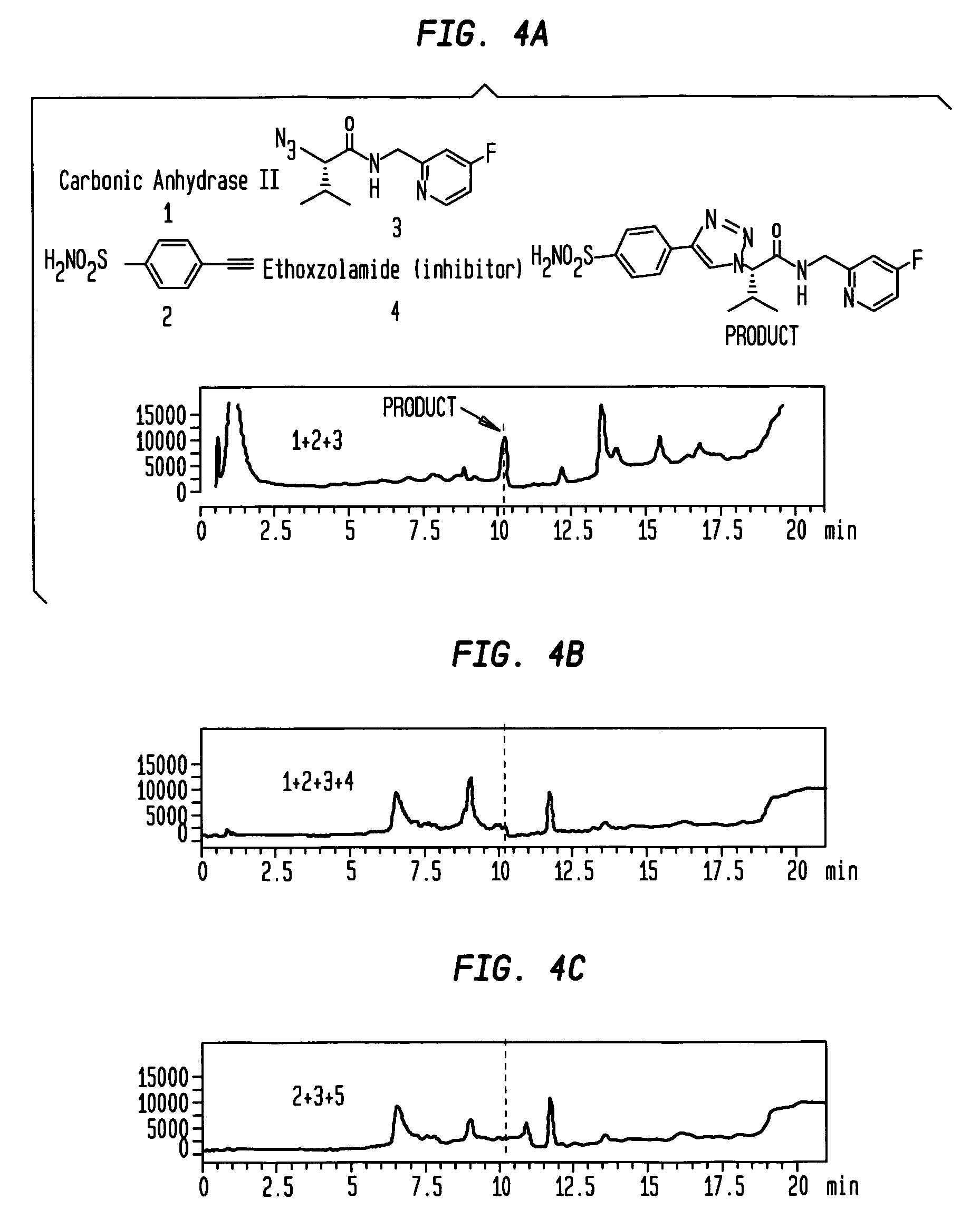In situ click chemistry method for screening high affinity molecular imaging probes
a click chemistry technology, applied in the field of in situ click chemistry methods for screening high affinity molecular imaging probes, to achieve the effect of high expression
- Summary
- Abstract
- Description
- Claims
- Application Information
AI Technical Summary
Benefits of technology
Problems solved by technology
Method used
Image
Examples
examples
[0107] Ca-II in Situ Screens
[0108] General. Carbonic anhydrase II from bovine erythrocytes (Sigma-Aldrich, catalog number C2522; lot number 083K9295, 4,014 Wilbur-Anderson units / mg, 90% protein content by Biuret) was used for in situ click chemistry experiments and for the determination of binding constants. We tested the protein by SDS gel electrophoresis and found it to display a single band corresponding to 29-30,000 molecular weight units. Carbonic anhydrase II from human erythrocytes (Sigma Aldrich, catalog number C-6165, 4,260 wilbur-anderson units / mg) was used for the determination of binding affinities for the human enzyme. All fluorescence measurements were performed on a SPECTRA MAX GEMINI fluorescence plate reader at 37° C. The LC / MS analyses were performed on an Agilent 1100 series LC / MSD (SL) using a 30×2.1 mm Zorbax C8 column with a Phenomenex C18 pre-column. Compound detection was accomplished by electrospray mass spectroscopy in positive selected ion mode (LC / MS-SI...
PUM
| Property | Measurement | Unit |
|---|---|---|
| Affinity | aaaaa | aaaaa |
Abstract
Description
Claims
Application Information
 Login to View More
Login to View More - R&D
- Intellectual Property
- Life Sciences
- Materials
- Tech Scout
- Unparalleled Data Quality
- Higher Quality Content
- 60% Fewer Hallucinations
Browse by: Latest US Patents, China's latest patents, Technical Efficacy Thesaurus, Application Domain, Technology Topic, Popular Technical Reports.
© 2025 PatSnap. All rights reserved.Legal|Privacy policy|Modern Slavery Act Transparency Statement|Sitemap|About US| Contact US: help@patsnap.com



